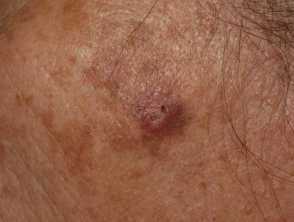- General Dermatology
- Eczema
- Alopecia
- Aesthetics
- Vitiligo
- COVID-19
- Actinic Keratosis
- Precision Medicine and Biologics
- Rare Disease
- Wound Care
- Rosacea
- Psoriasis
- Psoriatic Arthritis
- Atopic Dermatitis
- Melasma
- NP and PA
- Skin Cancer
- Hidradenitis Suppurativa
- Drug Watch
- Pigmentary Disorders
- Acne
- Pediatric Dermatology
- Practice Management
Superficial X-Ray a Well-Tolerated, Non-Surgical Option for Basal and Squamous Cell Carcinomas
SXRT may present a cost-effective and surgery-free therapeutic option for patients with non-aggressive BCC and SCC.
The economic burden of non-melanoma skin cancer (NMSC) continues to increase, prompting a need for cost-effective management options. While Mohs micrographic surgery (MMS) remains the gold standard, it may not be suitable for elderly patients with various health challenges, according to authors of a recent study published in the Journal of the American Academy of Dermatology.
Superficial x-ray therapy (SXRT) is emerging as a viable alternative, and recent studies suggest its efficacy, ease of use, and cost-effectiveness. Therefore, study authors sought to review its efficacy in non-aggressive NMSCs such as basal and squamous cell carcinomas.
The comprehensive 22-year retrospective analysis focused on 2490 biopsy-proven NMSCs in 1082 elderly patients. Biopsies had been collected from January 1, 2000, to June 1, 2022.
Basal and squamous cell lesions were ruled out as aggressive depending on a number of factors. In squamous cell lesions, lesions that exhibited perineural invasion, were poorly differentiated, or invaded subcutaneous tissue were deemed aggressive. In basal cell lesions, lesions were deemed aggressive if they exhibited PNI or were sclerosing, morpheaform, micronodular, or infiltrative 76 histologic subtypes.
The study assessed hypofractionated SXRT, a treatment approach involving larger fraction sizes delivered in fewer sessions. This modality aims to reduce costs while maintaining comparable cure rates, especially beneficial for patients with limited life expectancy, study authors wrote.
Among the data, tumor recurrence rates at 2, 5, and 10 years were 2.2%, 6.0%, and 10.5%, respectively. The average dose administered was 35.7 Gy over 5.47 fractions, significantly lower than conventional protocols using 40 to 45 Gy over 10 to 15 fractions.
Regarding the financial aspect of treatment, the cost associated with dermatologic office-based superficial radiation (5 fractions) totaled $734.67. In dermatologic office-based superficial radiation (12 fractions), this total rose to $1,610.30. Comparatively, Mohs micrographic surgery completed on the head or neck regions with 1 additional stage and intermediate repair amounted to $1,396.16.
According to authors Mattia et al, this study represents one of the most extensive hypofractionated SXRT investigations to date.
The findings suggest that hypofractionated SXRT could be particularly valuable for non-surgical candidates, including those from underserved or low socioeconomic backgrounds.
"Our study highlights the utility of hypofractionated SXRT as a well-tolerated and less expensive 91 treatment alternative for select NMSCs in non-surgical patients," according to study authors. "Further research should expand 92 on the usage of hypofractionated scheduling in patients from underserved or low socioeconomic 93 backgrounds who may also greatly benefit from reduced costs in treating NMSCs."
Reference
Mattia A, Thompson A, Lee SK, Hong HG, Green WH, Cognetta Jr. AB. Superficial x-ray in the treatment of non-aggressive basal and squamous cell carcinoma in the elderly: A 22-year retrospective analysis. J Am Acad Dermatol (2024), https://doi.org/10.1016/j.jaad.2024.01.010

